
Arquivo para a ‘Antropotécnica’ Categoria
Metaphor and speculation
There is nothing in philosophical discourse (or in well-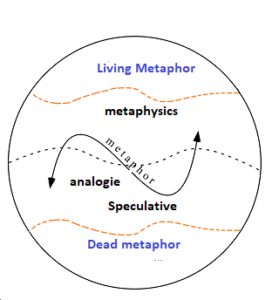 structured thinking) that is free from presuppositions.
structured thinking) that is free from presuppositions.
In the living metaphor, Paul Ricoeur clarifies that this is “for the simple reason that the work of thought by which a region of the thinkable is thematized brings into play operational concepts that cannot, at the same time, be thematized” (Ricoeur, 2005, p. 391).
These postulates are fundamental to understanding discourse, rhetoric and mere speculation.
Paul Ricoeur makes this study around the questions: “Which philosophy is involved in the movement that leads the investigation from rhetoric to semantics and from meaning to reference? “(idem).
It will be in the answer to these questions, and “without reaching the conception suggested by Wittgenstein of a radical heterogeneity of language games” (Ricoeur, 2005, p. 392) it is possible to recognize: “in its principle, the discontinuity that ensures the speculative discourse its autonomy” (idem).
Not explained by Ricoeur, but Edgar Morin talks about two roots of modern discourse that lead speculative discourse to a modern form of obscurantism: the closure in areas of overly specialized knowledge, which he calls hyperspecialization.
Here, metaphor can be confused with mere speculation and philosophy would be “induced by the metaphorical functioning, if it could show that it only reproduces, on the speculative level, the semantic functioning of poetic discourse” (idem).
He clarifies that the touchstone of this misunderstanding is “the Aristotelian doctrine of the analogical unity of the multiple meanings of being, ancestor of the medieval doctrine of the analogy of being” (idem) which we will return to in the next post to understand the metaphysical limitations of Aristotelian ontology.
The second, more fundamental clarification is the categorical discourse, where “there is no transition between poetic metaphor and transcendental equivocality” which is the conjunction between theology and philosophy “in a mixed discourse” that creates confusion between analogy and metaphor” (Ricoeur , 2005, p. 393), and would this imply “a sub-reption, to return a Kantian expression?” (idem), for this reason it is necessary to return to the metaphysical question and in it the ontological question.
He quotes as an epigraph Heidegger’s statement that “the metaphorical only exists within metaphysics”, this is the heart of this work by Ricoeur, and he calls it a “second navigation”, an allusion to Jacques Derridá’s “Mytologie blanche”, passing from living metaphor to dead metaphor.
Ricoeur, P. (2005) Metáfora viva. trad. Dion David Macedo. Brazil, SP: Ed. Loyola.
Spirituality and Worldview
Spirituality is the search for meaning in life, it can stop at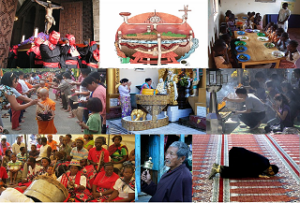 the physis, which for the Greeks was nature, or it can go beyond and contemplate the meta-physis, which means μετα (metà) = after, beyond all; and Φυσις [physis], that is, beyond nature and physics.
the physis, which for the Greeks was nature, or it can go beyond and contemplate the meta-physis, which means μετα (metà) = after, beyond all; and Φυσις [physis], that is, beyond nature and physics.
Thus, a spirituality that stops in nature, the explanation for example of the origin of the universe, even if it is a physical worldview, lacks an eschatological worldview that explains the origin and end of everything, will at some point fall into sophistry and nihilism, as the sophist Gorgias (485-380 BC) nothing exists.
If nothing exists, the meaning of life is meaningless, much is superficially explored the meaning of life, for many it is just being happy, it is still a limited worldview, pain and suffering are part of life, so it is necessary to go through them for the life actually makes sense.
Spirituality needs a worldview, or if you prefer the more philosophical term, a worldview (Weltanschauung), used in an almost opposite way by Kant and Heidegger, while Kant uses it as idealistic transcendence (from subject to object), Heidegger it returns to the metaphysical tradition, with the purpose of distancing itself from it.
The concept of eidos (in Greek is form and essence) transformed into an idea, and the separation of the subject from the object, relegated the questions of the spirit (not even spirituality can be called) to the field of subjectivity, the starting point of the philosophical movement called German idealism it was the publication of the Critique of Pure Reason in 1781 by Immanuel Kant (1724-1804), ending fifty years later with the death of Hegel (1770-1831).
Martin Heidegger starts by questioning the meaning of being of being-there. This is because “this term does not mean only the conception of the connection between natural things, but, at the same time, an interpretation of the meaning and purpose of the human being there and, therefore, of history [Geschichte]” (HEIDEGGER, 2012, p. 13).
Much of what is called spirituality is actually just a search for meaning in life, a mental exercise that is different from the spiritual, lacks an ascesis, a true “ascension”, so it always returns to physis, nature or to the ground.
A complete worldview must go beyond the fact and reach intentionality, everything exists with an intention, to be aware is “to be aware of something”, as Husserl’s phenomenology thinks, so awareness of the “universe” therefore has an intention of the existence of the universe , which is part metaphysical and part spirituality, something or someone has (and didn’t have) a primary intention, something big, infinite, superior to nature, the universe and everything we know, something ineffable.
HEIDEGGER, Martin. (2012) O problema fundamental da fenomenologia. (The fundamental problems of phenomenology(. Trans.: Marco Antônio Casanova. Petrópolis, Brazil: Vozes.
Civilization and being’s malaise
The phrase widely used in literature and sometimes in the public domain is from Freud: Civilization and its malaise, however, is not only in the field of psychology, the author clarified to be: “impossible to despise the extent to which civilization is built on the renunciation of instinct , how much exactly does it presuppose the non-satisfaction (by oppression, repression, or some other means?) of powerful instincts. This “cultural frustration” dominates the vast field of social relationships among human beings. … It is not easy to understand how it can be possible to deprive an instinct of satisfaction. This is not done with impunity. If the loss is not economically compensated, one can be sure that serious disturbances will result from it”. (Freud, 1930/1997, p. 118).
the public domain is from Freud: Civilization and its malaise, however, is not only in the field of psychology, the author clarified to be: “impossible to despise the extent to which civilization is built on the renunciation of instinct , how much exactly does it presuppose the non-satisfaction (by oppression, repression, or some other means?) of powerful instincts. This “cultural frustration” dominates the vast field of social relationships among human beings. … It is not easy to understand how it can be possible to deprive an instinct of satisfaction. This is not done with impunity. If the loss is not economically compensated, one can be sure that serious disturbances will result from it”. (Freud, 1930/1997, p. 118).
See that “oppression, repression or some other means” belongs to the author, who could hardly imagine a digital world capable of this, and cultural frustration placed in quotation marks by the author dominates relationships, and who states even more curiously that the search for “economic compensation” is a refuge.
But this was registered in other areas as well, Edmund Husserl wrote about the crisis of the sciences: “In the urgency of our life – we have heard it said – this science has nothing to say to us. It initially excludes precisely the questions that, for men of our unfortunate times, abandoned to the most fateful revolutions, are the pressing questions: the questions about the meaning or absence of meaning of all human existence” (The crisis of the European sciences ), one can also speak of the crisis or night of God, of the identity and the oblivion of Being.
Thus, in Postmodernity, if we dispense with superegoic resources in the Freudian sense, what assures us a cultural mask is the dispute between nations and a new form of defense of honor, for example, which are disguises for the various types of urban violence, the drug addiction, the new presence now of psychopolitics that drives us to consumption and polarization and angers us.
This omnipresence of violence camouflaged in different social relations is what characterizes the end of respect that characterizes a healthy distance between I and the Other, or we include the equal that is my mirror, or we violently repel as an Other.
FREUD, S. (1997). O mal-estar na civilização. In Obras psicológicas completas de Sigmund Freud: edição standard brasileira (Vol. 21, pp. 75-174). Rio de Janeiro: Imago. (Original publicado em 1930). (Civilization and its Discontents)
Topology of Violence
The book Topology of violence (original: Topologie der Gewalt),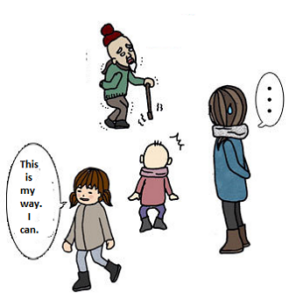 can be considered a continuation of the analysis of Sociedade do Cansaço, in which it shows why society is on the brink of collapse, and shows that at the same time a general thesis about its disappearance, a war trend that now gives way to the other, changing its way of operating.
can be considered a continuation of the analysis of Sociedade do Cansaço, in which it shows why society is on the brink of collapse, and shows that at the same time a general thesis about its disappearance, a war trend that now gives way to the other, changing its way of operating.
His ideas about violence are innovative and out of common sense, which always thinks of the modern conception of society in freedom, individuality and personal fulfillment, goes in search of the dark side of the subject, where he begins.
This violence is the one that tends to eliminate the other, anonymous, “subjective” and systemic, which is not revealed as it accepts the antagonist’s freedom.
His concept of violence is then that which he defines as functioning in a free individuality, motivated by the activity of persevering and not failing, and with the ambience of efficiency he renounces even making sacrifices at the same time, but entering a whirlpool of limitation, self-exploration and collapse.
All this has a relationship with seduction, which he explained in an interview with El Pais newspaper that seduction cannot be confused with buying: ““I think that not only Greece, but also Spain, are in a state of shock after the crisis financial . The same happened in Korea after the Asian crisis. The neoliberal regime radically implements this state of shock. And here comes the devil, which is called liberalism or the International Monetary Fund, and gives money or credit in exchange for human souls.”
All this to increase credit and give greater incentive to supposed efficiency, and he explains that in the end: “We are all exhausted and depressed. The fatigue society in South Korea is now in a deadly stage,” revealing the little-known side of the country he came from and who speaks property.
And it’s not a happier society, he explains, “the invisible doesn’t exist, so everything is delivered naked, without secret, to be devoured immediately, as Baudrillard said”, he explains that everything should have a veil, however thin, an interiority.
Arroyo, Francesc. Aviso de derrumbe (Crash warning). interview by Byung Chul Han to the daily El País, Spain.
Dialogue is the essential
The essential is far from modern society because it is required of every human being, even those who have some physical limitation or social difference, the maximum performance, Byung-Chul Han in his book Society of Tiredness (Brazil, Vozes, 2015), defines also as a performance society.
it is required of every human being, even those who have some physical limitation or social difference, the maximum performance, Byung-Chul Han in his book Society of Tiredness (Brazil, Vozes, 2015), defines also as a performance society.
It projects us out of the essential, unlike an “immunological epoch” it is a “neuronal epoch”, the division between “inside and outside, friend and enemy or between self and stranger”, is defined as “attack and defense ” (HAN, 2015, p. 8) that is why it tends towards confrontation and not peace.
Peace requires dialogue, and the essential requires inner choices that move us to the outer essential.
This exhaustion of performance is what “disables us to do anything” (Han, 2015, p. 76) and dialogue becomes difficult, proselytizing or even mere rhetoric, but only it can lead to peace. Edgar Morin, who turned 100 (see previous post), established as a dialogical operator that capable of operator: reason and emotion, the sensitive and the intelligible, the real and the imaginary, reason and myths, and, science and art.
It can be seen that polarization is always on one side, it does not articulate “inside and outside” as proposed by Chul Han, so dialogizing is to admit the connection between these poles and not their mutual exclusion.
Due to the identity issue, strong in our times involving cultures, religions and nationalities, the pole between reason and myths becomes exacerbated where dialogue is difficult.
It is necessary to respect the different when dialoguing, also allowing the word and not excluding it with only rational arguments, there are ontological, historical, cultural, and social reasons for their arguments, and if we are not “disarmed” the dialogue does not take place.
When sending the disciples to bring the “good news”, the instructions given to the apostles are interesting, in Mk 6:8-10 he asks them not to take anything, not even purses or bags, and when they enter a house they wish for peace, and stay there until your departure, and the reading says that you cured the sick and cast out demons, the essentials and dialogue have this potential.
The unbalanced performance, tiredness and frivolity lead society to exhaustion and the difficulty of dialogue, because we are also full of convictions and reasons.
HAN, B.-C. (2015) Sociedade do Cansaço (Society of Burnout). Translation by Enio Paulo Giachini. Brazil, Petrópolis: Vozes.
Between Being, Nothing and interiority
The first ontological sensation, faced with rationality, was an attempt to confine Being in its subjectivity (which comes from the subject) in order to make the relationship with the Being an “objectivity” that exists outside of Being (for modernity outside the subject).
attempt to confine Being in its subjectivity (which comes from the subject) in order to make the relationship with the Being an “objectivity” that exists outside of Being (for modernity outside the subject).
As both deny ex-sistence, here it means ex “to leave” and the verb sistere, “to be placed”, so to exist is what is placed outside the being, more than subjectivity is the very essence of Being, beyond of the imaginary and the symbolic, of the imaginary because it is unrepresentable and the symbolic because it means the non-meaning, but there are all essence and existence of Being.
The conception of denying the existence of being, which has to deny even the reason that conceives it, comes from Gorgias (485-380 BC), a sophist whom Plato refuted in a book, for him there was no truth and it can be said that it is the distant principle for relativism.
The existence and reality of Being, although veiled, lies in the possibility of a clearing, on which depends the opening of Dasein, its relationship with the physis (nature in the general sense of the Greeks) and for which the veil that covers the being, and so the relationship with being and interiority.
If we see ourselves only as we see in a mirror, we see the image of our being, if we see as we are, it means that we are able to see beyond it our interiority, our complexity and from them how we relate to the whole of which we are part.
The projection on the exteriority and denial of interiority is part of the emptying of Being in modernity, we are what we do and it doesn’t really matter what we actually are interiorly.
From this emptying, nihilism (nihil – nothing) was born, solipsism (the I and my sensations) and, in a way, subjectivism (considerations only about what is personal, an empty interiority) and a good part of theorizations values in the infernal dichotomies (subject x object) and (nature x culture).
In a more current interpretation, in the Society of Tiredness Byung Chul Han speaks of interiority, in another book The Society of Transparency he states: “today the world is not a theater in which actions and feelings are represented and read, but a market where they are exposed , sells and consumes intimacies” (HAN, 2017, p. 80).
Han, Byung-Chul (2017). Transparency Society. Enio Paulo Giachini. Brazil: Petrópolis, Vozes, 2017.
From language to being
Language as speech and rhetoric is just what is externalized, but if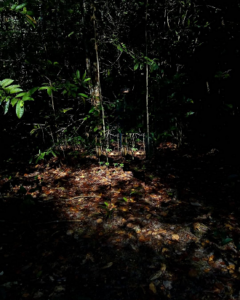 thought of as ontology, it is the opening (Erschlossenheit) from the silent appropriation of the self, as Heidegger thought of Being and Time, whether the opening (offenheit) is thought of as clearing of being (lichtung des Seins), the one used by thinkers and poets, and which shows itself in the measure of its silent correspondence as being, expressed in Letter on Humanism.
thought of as ontology, it is the opening (Erschlossenheit) from the silent appropriation of the self, as Heidegger thought of Being and Time, whether the opening (offenheit) is thought of as clearing of being (lichtung des Seins), the one used by thinkers and poets, and which shows itself in the measure of its silent correspondence as being, expressed in Letter on Humanism.
In this text, he writes: “Destiny appropriates itself as a clearing of the Being, which it is, as a clearing. It is the clearing that grants the being’s proximity. In this proximity, in the clearing of Da Lugar, the man lives as a former caretaker, without him being able to experience and assume that dwelling today” (Heidegger, 1967, p. 61)
In general terms, language is a vehicle for the expression of something internal to man, that is, a bridge that links the inside and outside of man, such a way of speaking is thought of as an activity that takes place in which man is the very medium, that’s why there is silence before.
But according to the ontological conception of language, it is not language that belongs to man, but rather man himself conceived ontologically as a resolute being-toward-death or ontologically being that responds as mortal to the silent request of Being.
In more simplistic terms, this is the difference between the being that “has” a language, in the sense of the ability to speak, and the ontological conception that thinks man as “being” through being possessed of the ability to speak, the language here is not just the transmission of information, but the way in which human existence itself manifests.
In this context, communication begins with silence, an emptiness is needed, an epoché in communication, which presupposes an Other who will be a recipient, is not thus a receiver, but a destination of his speech, and this is the way in which human existence itself manifests. .
Thus for Heidegger, but also for Niklas Luhmann, it would be necessary to review the entire theory of Communication, since receiver and transmitter are themselves the non-human environment, and do not “replace” man, they cannot exist or have a relationship as if If man were something accessory, there is all the hallucination of the current Artificial Intelligence, putting receiver and transmitter in the place of source and destination, it would be necessary to foresee a “clearing” of the being “outside” of Being
For this reason, the clearing is internal, we have already posted in another opportunity what Heidegger affirms in his magnum work Being and Time: “Insofar as the being is in force from the aletheia, the self-unveiling emerging belongs to him. We call this the action of self-enlightenment and enlightenment, the clearing” (cf. Being and Time).
HEIDEGGER, Martin. Carta sobre o Humanismo (Letter on humanism). Brazil, Rio de Janeiro: Tempo Brasileiro, 1967, p. 61.
What is understanding
Understanding has become in the Western analytic structure a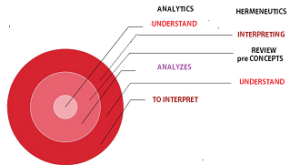 vicious circle that tends only to repeat what it considers to be true starting from some historical aphorism, what Gadamer calls romantic historicism in his criticism of Dilthey.
vicious circle that tends only to repeat what it considers to be true starting from some historical aphorism, what Gadamer calls romantic historicism in his criticism of Dilthey.
The forgetting of being ignores that the hermeneutic circle that goes from interpretation to a new understanding is the very structure of a new sense, a sense of existence, which is in Being.
Thus, the circularity of understanding is not primarily a logical requirement, based on an A or B method, but the ontological unfolding itself: “Heidegger’s hermeneutic reflection has its high point not in the fact that it demonstrates that a circle is present here, but a circle this has a positive ontological meaning” (GADAMER, 2013, p. 355).
Heidegger (2014), in his magna work Ser e Tempo, elaborated a hermeneutics of facticity based on the temporal analysis of human existence (Dasein), here facticity is the way of being in his Dasein that finds, in temporal existence, the possibility of revelation, of clearing:
“The structure of temporality appears as well as the ontological determination of subjectivity. But she was more than that. Heidegger’s thesis was that being itself is time” (Gadamer, 203, p. 345), here is the deepest essence of Heidegger’s work, which points to the hermeneutic circle:
“The decisive thing is not to leave the circle, but to enter it correctly. This circle of understanding is not an ordinary circle, in which any mode of knowledge moves, but it is the expression of the existential structure-of-previousness of Dasein itself. The circle must not be degraded into vitiosum nor be tolerated either. It shelters a positive possibility of the most original knowledge, a possibility that can only be truly realized in an authentic way, if the interpretation understands that its first, constant and last task consists in not letting the previous, the previous seeing and the preconception is given to it by occurrences and popular concepts” (Heidegger, 2014, p.433), but to address the same things.
Understanding seen in this way may seem too philosophical or a theorization about thinking, it is not, because, even in the oblivion of Being, the current frail structure of thought, this is the learning process that involves since the learning of language by a child even the most elaborate methods of discovery and innovation, or are just repetition of something already done, and thus without facticity, as it is mere repetition.
GADAMER, H-G. (2013) Truth and method Flávio Paulo Meurer, revision of the translation by Enio Paulo Giachini. 13. ed. Petropolis: Vozes; Bragança Paulista: São Francisco University Publisher, 2013.
HEIDEGGER, M. (2014) Ser e tempo Translation, organization, previous note, attachments and notes by Fausto Castilho. Campinas, SP: Publisher of Unicamp; Petrópolis, RJ: Editora Vozes, 2014.
The language as plurality
The problem of interpretation when we are thinking about language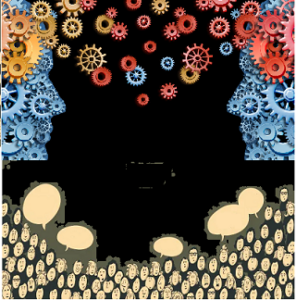 appears as a demonstrative proposition, it occurs when such an interpretation becomes unique and true, Heidegger’s proposal is one of the possibilities of language, but not the only or the main one, when we deal only with logic it does not understand the plurality of language.
appears as a demonstrative proposition, it occurs when such an interpretation becomes unique and true, Heidegger’s proposal is one of the possibilities of language, but not the only or the main one, when we deal only with logic it does not understand the plurality of language.
This is present in what today is called narrative or discourse, we have already dealt with in several posts when we deal with Paul Ricoeur’s Living Metaphor, but here the issue is ontological: Being.
Science and technique, as well as the ideological narrative does not even touch the essential problem of the question of being, it is focused on what is called natural science or nature:
“natural science can only observe man as something simply present in nature (…) within this scientific-natural project we can only see him as a natural being, that is, we intend to determine the being-man through a method which was absolutely not projected in relation to its peculiar essence” (Heidegger, 2001, p. 53).
This is the reverie of tradition in the conception of language and truth, the one that brings the notion of finitude of being: being is time, for example, accelerating time we think of accelerating being, when in fact it is what causes its emptying , a common theme of the Heideggerians.
We separate the ontological Being from the existential, quoting Heidegger himself, because the analytic falls into another trap which is to link the being to the subject, copula and attribute, creating a structural possibility of language. It is tempting precisely because of its analytic composition, but deep down it is essentially logical and not ontological, Being escapes it.
Such evasion was already foreseen by Heidegger: “the essence of being in its multiplicity can never, in general, be collected from the copula and its meanings” (HEIDEGGER, 2003, p.391).
Language carries its own hermeneutic relationship. Heidegger, based on Being and Time, relocates the question of understanding and the search for truth, which was placed in the scope of the theory of knowledge, and launches it into the existential plane. In this way, the hermeneutic circle emerges, not tied to mere opinion or to functional logicism, nor to the analytic.
Heidegger’s hermeneutic phenomenology brings to light the notion of logos as unveiling, highlighting their belonging to language as the place where the human inhabits, in its finiteness.
HEIDEGGER, M.(2001) Seminário de Zollikon Petrópolis: Vozes.
HEIDEGGER, M. (2003) Os conceitos fundamentais da Metafísica: mundo, finitude, solidão. Rio de Janeiro: Forense Universitária.
The anguish, the finite being and the fear
Anxiety, as an essential category, is the most significant temporal fact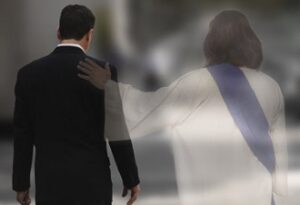 of our existence, the fact that man has an end, that he dies and his existence ends, it is from there that Heidegger works on another concept which is the being-for- the-death [Sein-zum-tode].
of our existence, the fact that man has an end, that he dies and his existence ends, it is from there that Heidegger works on another concept which is the being-for- the-death [Sein-zum-tode].
Thus death is a limitation of the original unity of being-there, and it means human transcendence, the power-being, which contains a possibility of non-being, but here only as negation, “the end” of being-in-the-world it is death, this end limits the power-being, which is its existence, and limits the possible totality of Dasein (1989, vol. II, p. 12)
It is possible to separate fear from strong fear, leaving the first within the limits of the finite, and fear outside these limits, what the human imagination penetrates and projects as not being, beyond being-to-death, a being-for -beyond death is strong fear.
Byung Chul Han warns that like positivity, negativity is also dangerous: “it is defined by the negativity of prohibition. The modal verb that governs it is the ‘cannot’ (…) The society of performance, increasingly, is in the process of discarding negativity. Growing deregulation is abolishing this. The unlimited ‘power’ is the positive modal verb of the society of conquest (…) prohibitions, commands and laws are replaced by projects, initiatives and motivation. The society of discipline is still governed by the ‘no’. Its negativity produces madmen and criminals. In contrast, the performance society creates depressives and losers.”
Thus, it is possible to think of negativity as an important process, although it generates fear, and from it generate a process of fear, which, far from denying the prohibitions, demonstrates that they can lead us to broader results than those promised by performance, is the beyond-being.
Neither the transcendence of idealism that is mere projection of being onto the object, the so-called subjectivism, nor being-to-death as a fatal transcendence, but a fear produced by negativity that leads us to recognize limits, such as those that were imposed in the Pandemic and that do not generate death, nor are confused with the negationism that is the modal positive, denying that human life needs limits in dangerous situations.
The reading of the Bible of Apostle Mark (Mk 4,35-41), can, in this context of fear, reveal new things about being, the reading says that “when dismissing the crowds”, Jesus went with the disciples “to the other shore”, I would say far from the being-there of the pure positivity of being-in-the-world, the boat faces a strong wind and strong waves begin to fill the boat, fear takes over the disciples, they strong fear for death and they say to the master “we are perishing”, the Master says to the wind and the sea: “shut up”.
It isnt magic or a simple demonstration of power, the phrase spoken by Jesus explains a lot: “Why are you so afraid? Do you still not have faith?”, but they still felt “a great fear”, it is the anguish.

